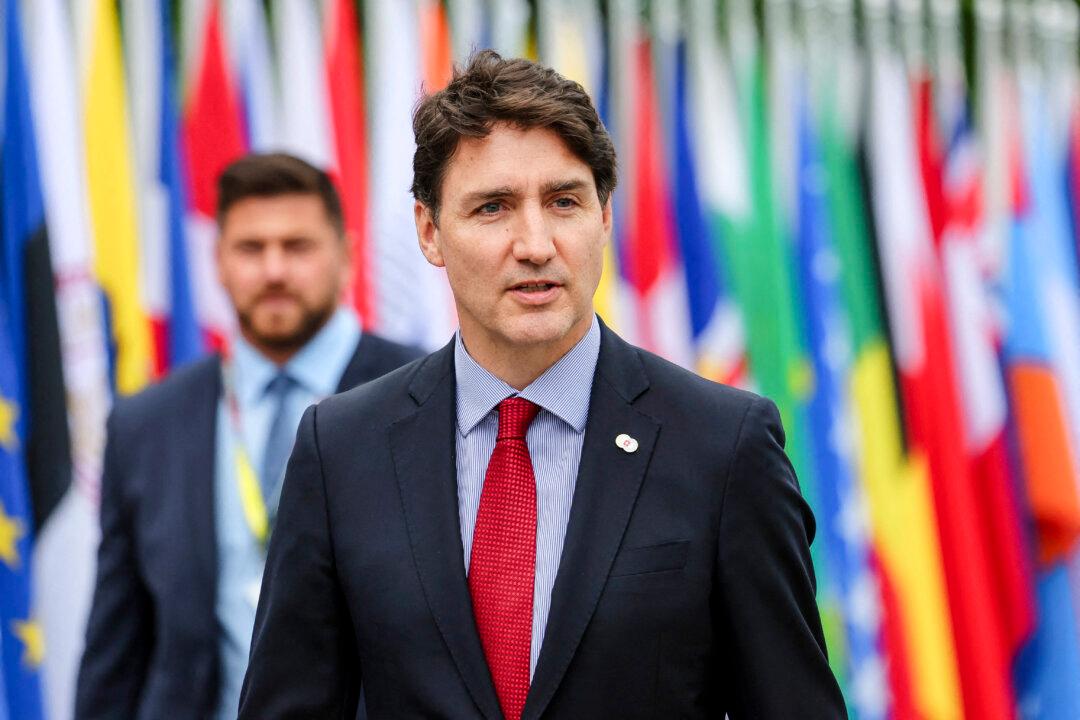- Morning Brief
- Posts
- EXPLAINER: What Is UN’s ‘Pact for the Future’ Championed by Canadian Gov’t?
EXPLAINER: What Is UN’s ‘Pact for the Future’ Championed by Canadian Gov’t?

Prime Minister Justin Trudeau at the opening ceremony of the Summit on Peace in Ukraine, near Lucerne, Switzerland, on June 15, 2024. Denis Balibouse/Pool/AFP via Getty Images
Prime Minister Justin Trudeau is championing a new United Nations-led blueprint for addressing global challenges called the “Pact for the Future“ as world leaders gather at the U.N. for its annual assembly.
In making his points about the importance of the pact, Trudeau said in an address at the United Nations in New York on Sept. 22 that the world is at an “inflection point.” He said the foundations of the international order are being undermined by climate change, rising inequality, record levels of displacement, and “the erosion of women’s rights, LGBT+ rights, and indigenous rights.”
“We can bury our heads in the sand, eschewing multilateralism in favour of short-sighted self-interest, or we can recognize that, collectively, we have a responsibility to set our differences aside to confront the serious global challenges and to deliver on a Pact for the Future that builds a more peaceful world, but also one where everyone, every generation, has a real and fair shot,” he said.
The Summit of the Future, held Sept. 22–23 as part of the 79th session of the United Nations General Assembly, upon its conclusion released a document outlining its adopted outcomes related to the Pact for the Future.
One of the stated actions is to “transform global governance and reinvigorate the multilateral system” to tackle the world’s challenges. Some other actions include strengthening efforts to “turbocharge” full implementation of the U.N.’s sustainable development goals (SDGs) by 2030 and seizing the opportunities associated with digital and other new technologies while addressing the threats posed by their misuse.
Canada is committed to achieving the SDGs across the globe, Trudeau said while virtually co-chairing a meeting of the U.N. SDGs Advocates group with Barbados Prime Minister Mia Mottley on Sept. 21.
Trudeau met with U.N. Secretary-General António Guterres on Sept. 22 and congratulated him on the adoption of the Pact for the Future, according to a news release from the prime minister’s office. The two then discussed progress on the U.N. SDGs and Trudeau “reaffirmed his commitment to championing global action toward meeting the SDGs.”
UN Pact for the Future
As stated in the outcomes document, the Pact for the Future pledges a “new beginning in multilateralism” that involves strengthening the multilateral system and its institutions, with the U.N. and its charter at the centre, to “keep pace with a changing world.”
The 66-page document outlines the pact’s 56 action steps. They include eradicating poverty, achieving gender equality, strengthening actions to address climate change, promoting member state cooperation to resolve conflicts, investing in children’s social and economic development, seizing the opportunities presented by science and technology “for the benefit of people and planet,” and advancing the goal of “a world free of nuclear weapons.”
The outcomes document says the current multilateral system is under “unprecedented strain” and requires a transformation in global governance to ensure ongoing progress. The pact outlines actions for “transforming global governance” and ensuring that progress across the U.N. three pillars of work—sustainable development, peace and security, and human rights—are not threatened.
“We must renew trust in global institutions by making them more representative of and responsive to today’s world and more effective at delivering on the commitments that we have made to one another and our people,” the document says.
It also calls for the Security Council to be enlarged “in order to be more representative of the current United Nations membership and reflective of the realities of the contemporary world,” and to better collaborate with the General Assembly.
The pact calls for the Economic and Social Council to be strengthened to accelerate sustainable development and promote global cooperation, for the Peacebuilding Commission to be reinforced to improve its role in building and sustaining peace efforts both internationally and within countries, and for the United Nations to be strengthened to better respond to “complex global shocks.”
Building on Agenda 2030
The Pact for the Future builds on the U.N.’s 2030 Agenda for Sustainable Development, an initiative launched by the U.N in 2015 to address a host of global challenges. The agenda involves 17 goals intended to be achieved by 2030, including ending poverty, achieving gender equality, developing sustainable agriculture, ensuring access to affordable and reliable energy, and promoting sustainable economic growth.
The 17 goals are associated with 169 “integrated and indivisible” targets, with each government setting its own national targets “guided by the global level of ambition” but taking into account their own circumstances. Each country decides how the targets should be incorporated into its national planning.
The Pact for the Future presents itself as a way to “urgently accelerate progress” toward achieving the Agenda 2030 goals, including by mobilizing additional financing for sustainable development. “We reaffirm that the 2030 Agenda for Sustainable Development is our overarching road map for achieving sustainable development,” the outcome document says.
Canada’s 2024 annual report on its strategy working toward the 2030 Agenda and SDGs says that while progress has been made with many of the goals and targets over the past four years since the agenda’s implementation, it “is not proceeding at the pace needed to achieve this ambitious agenda.” The report said too many Canadians continue to live in poverty despite economic growth and historically low unemployment, and that climate change remains one of the most pressing challenges.
According to the Sustainable Development Report 2024, produced by the UN Sustainable Development Solutions Network, Canada hasn’t yet met any of the 17 goals. The country faces “major” challenges in meeting four of the goals, “significant” challenges in reaching six, and continues to face “challenges” with seven others.